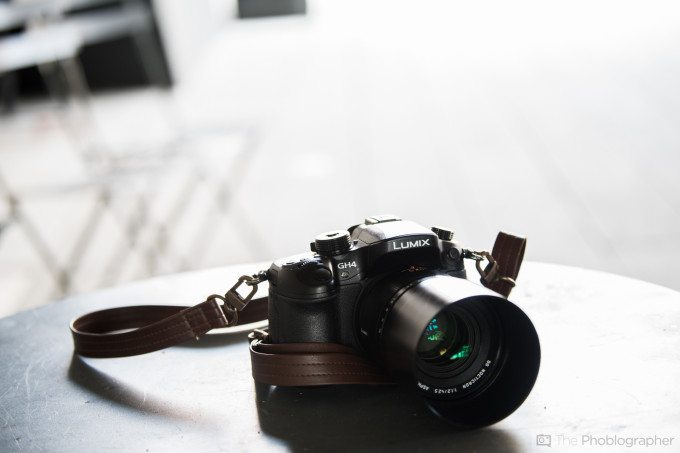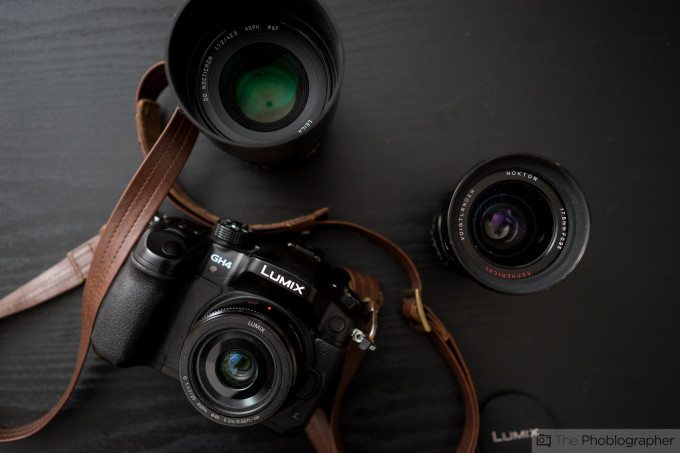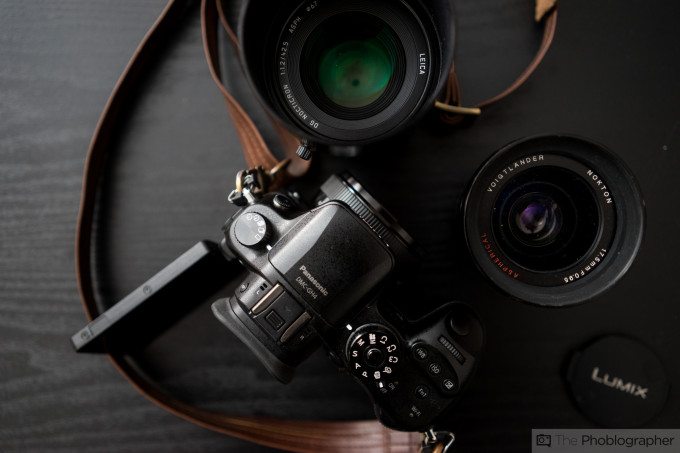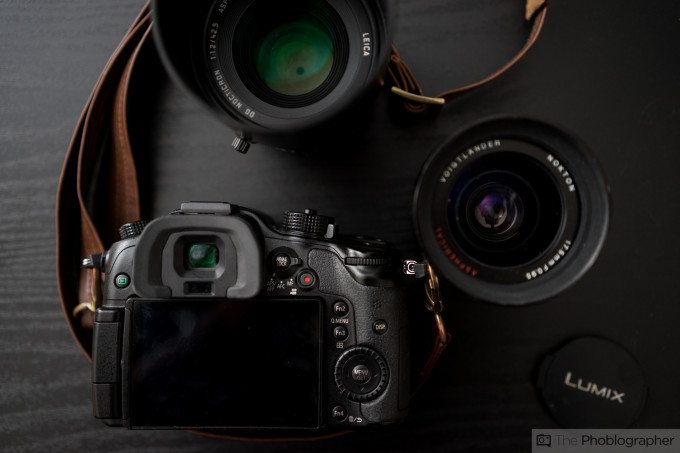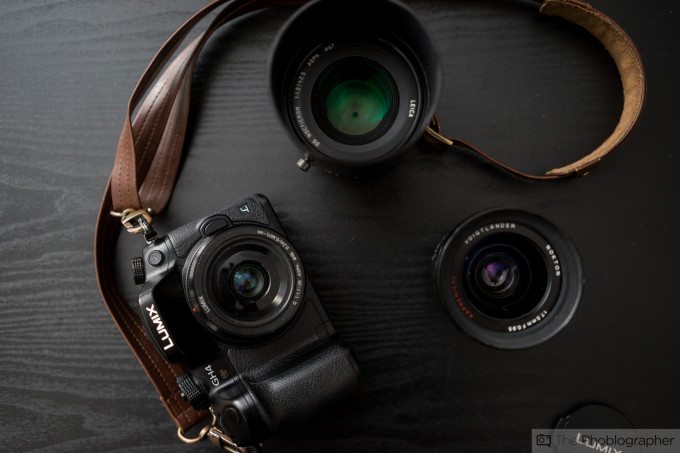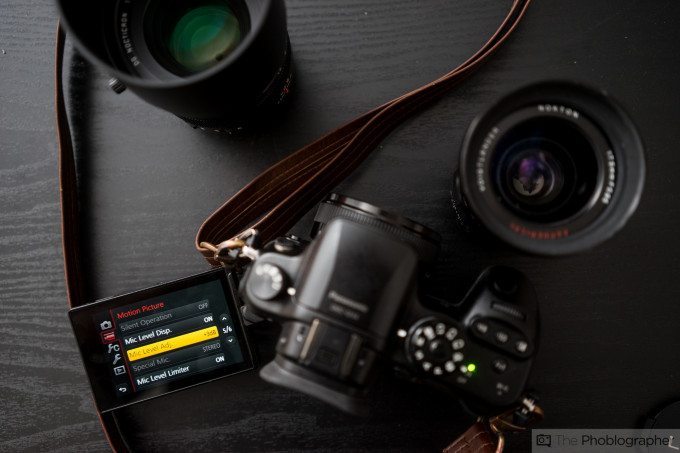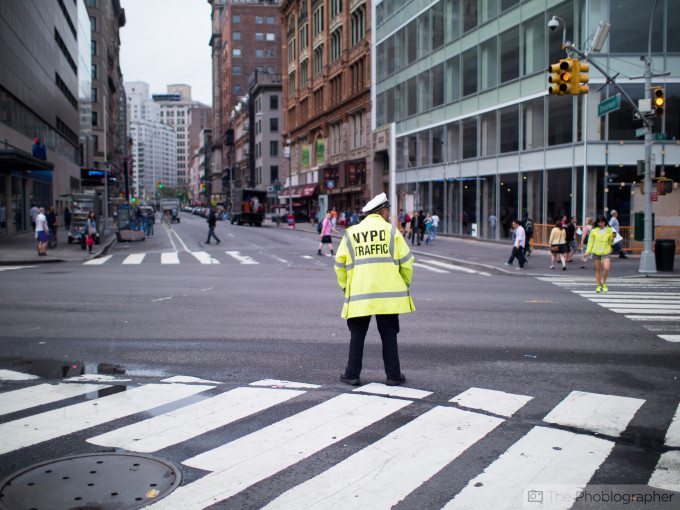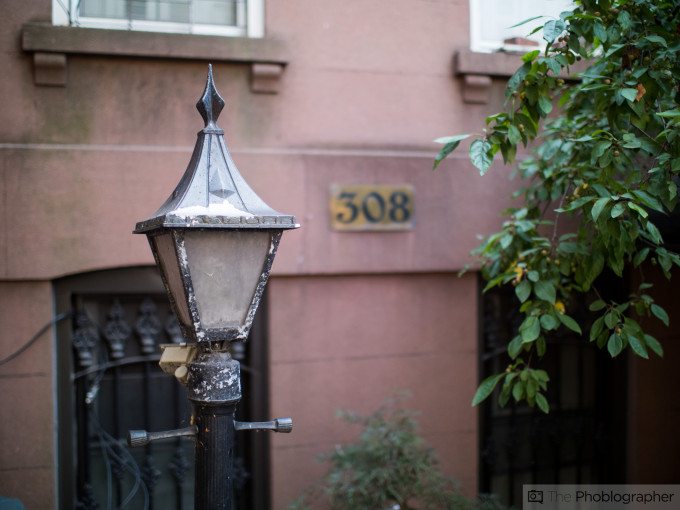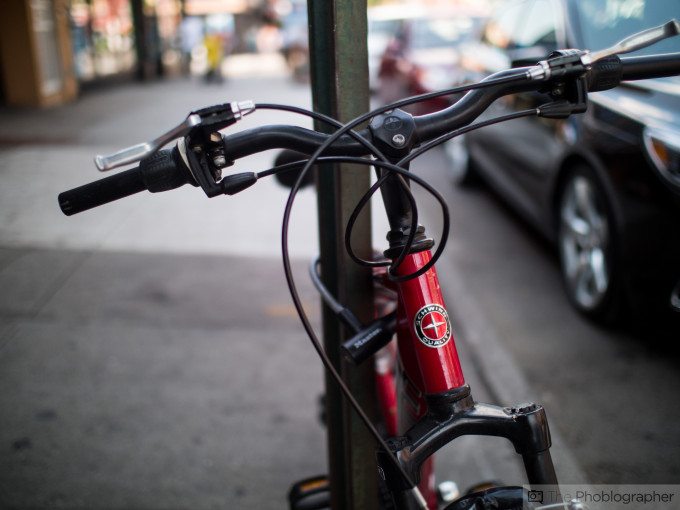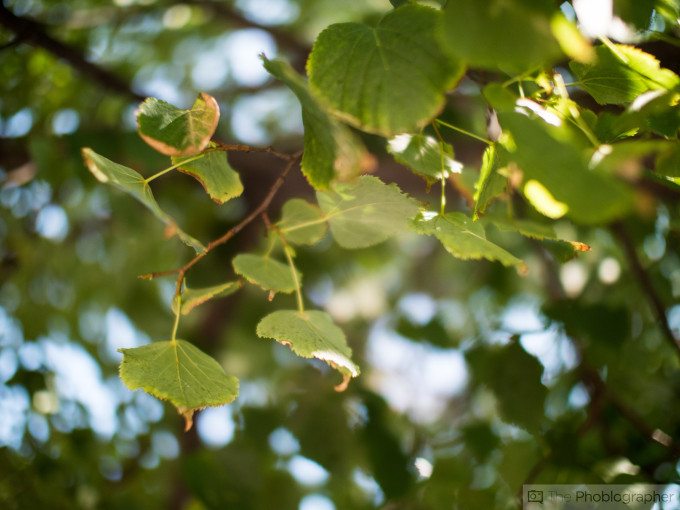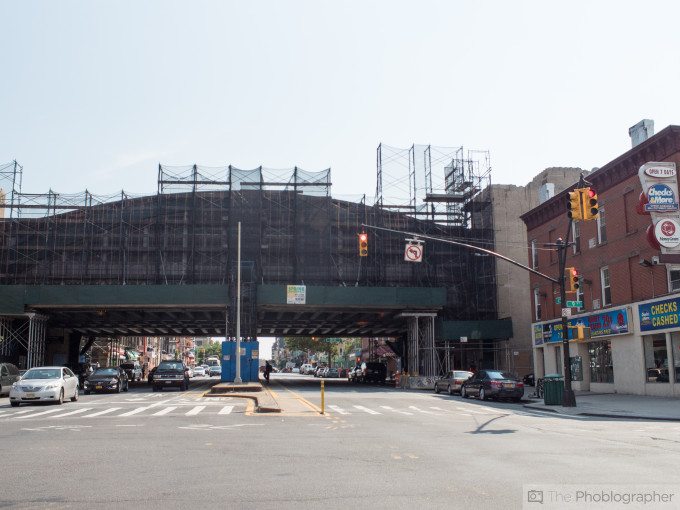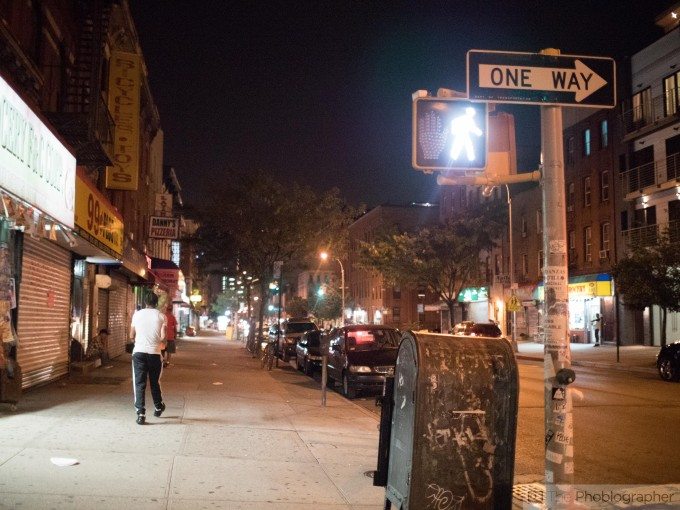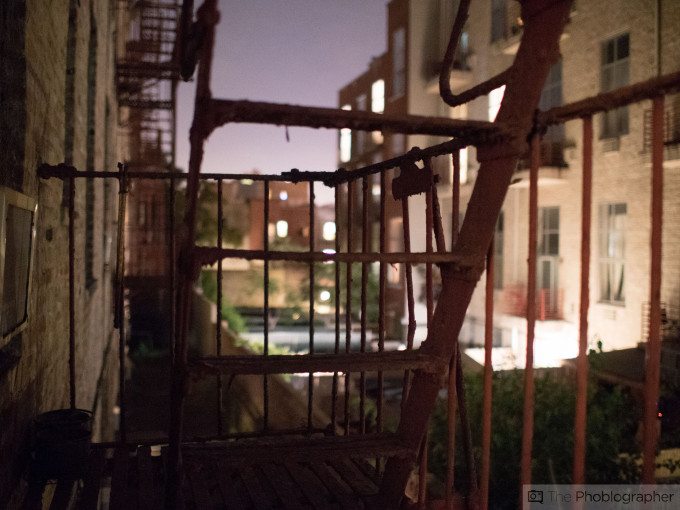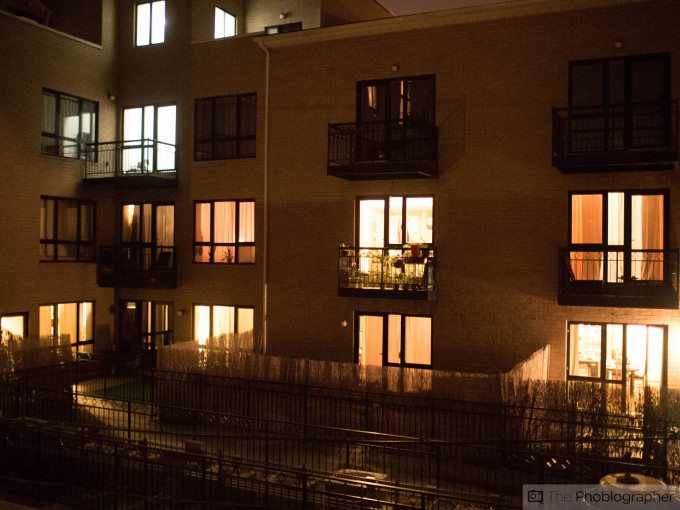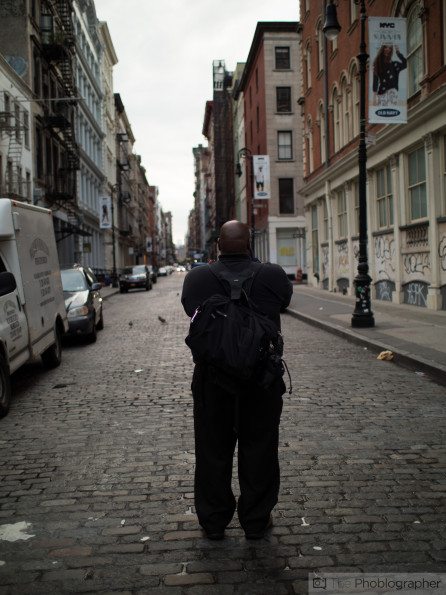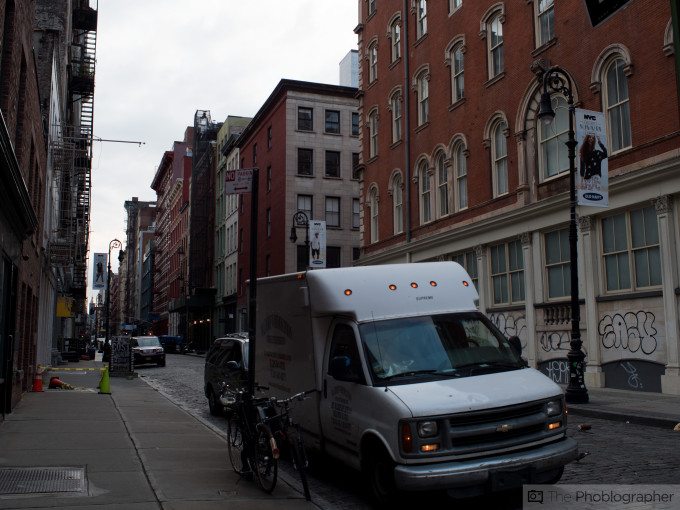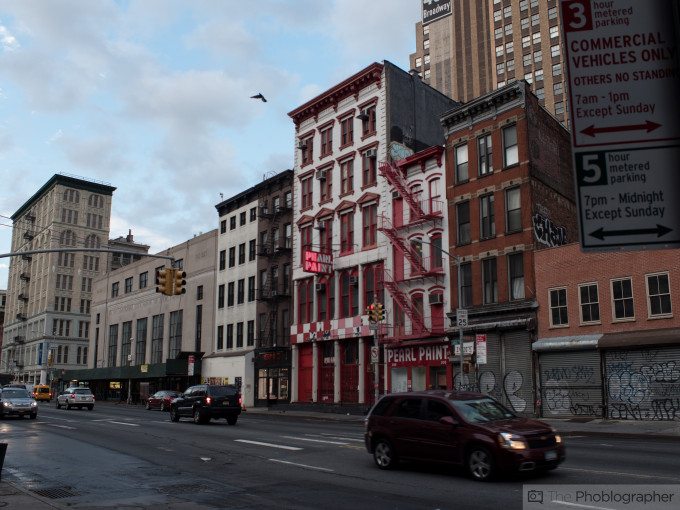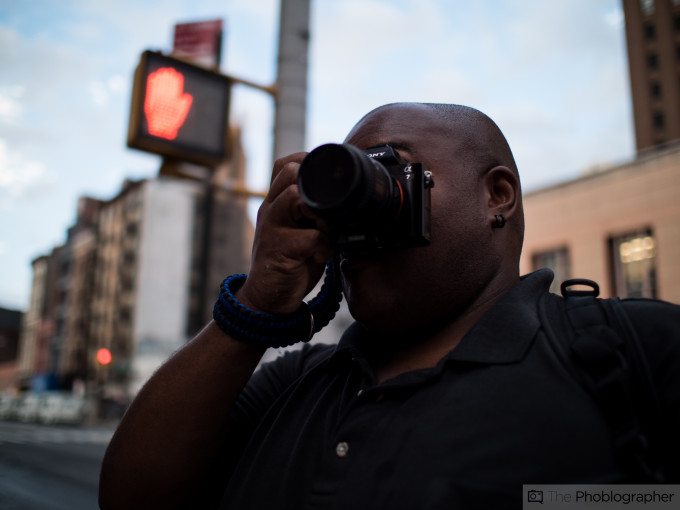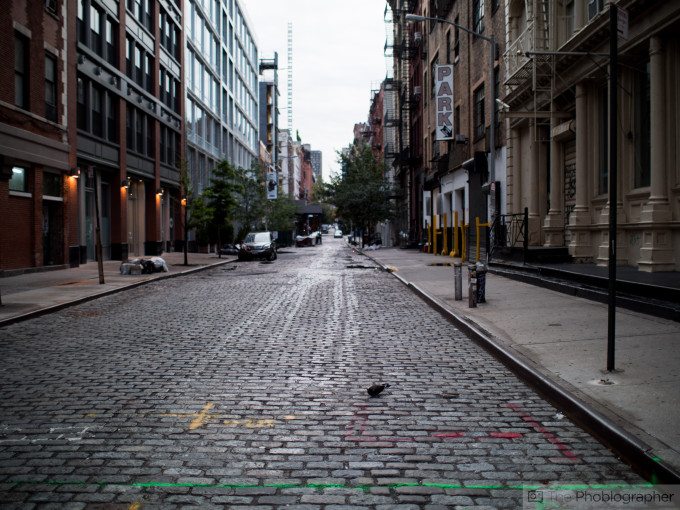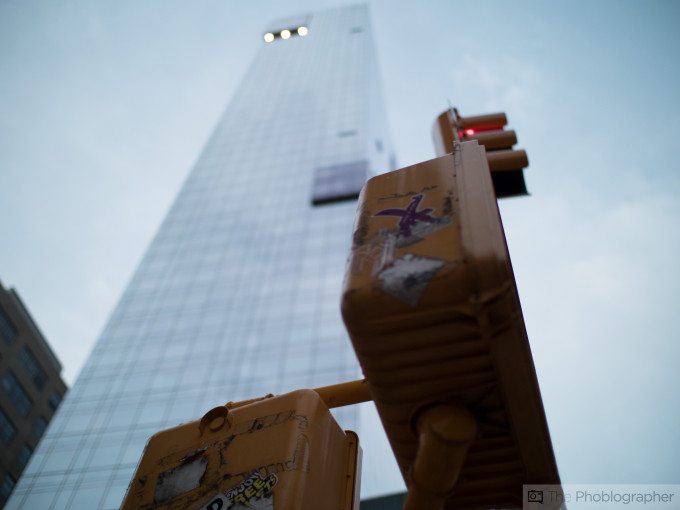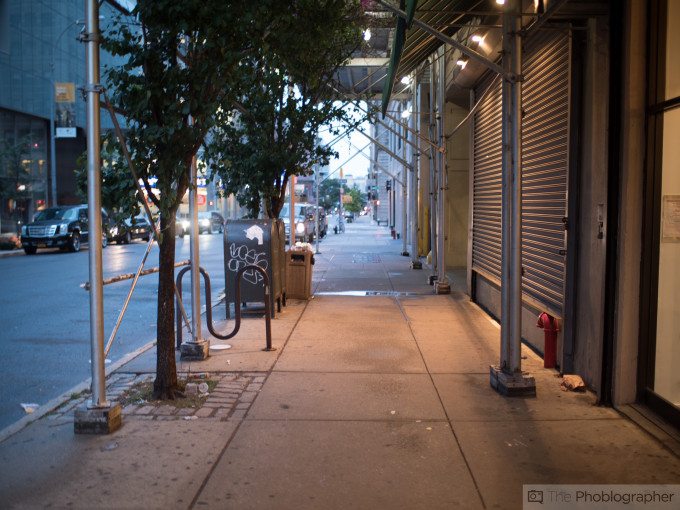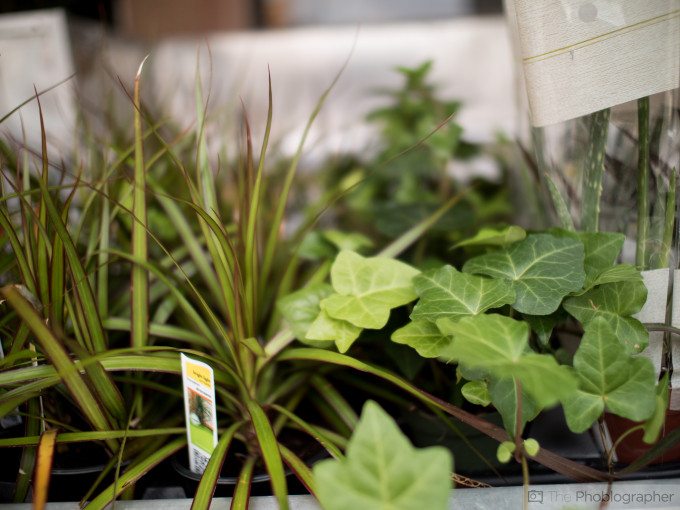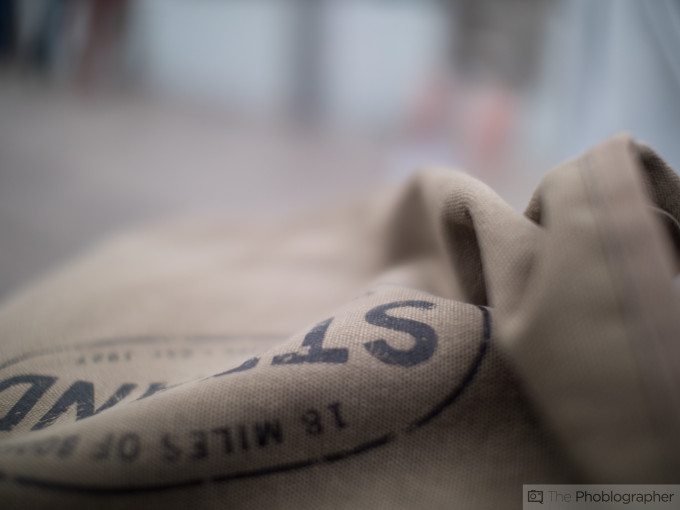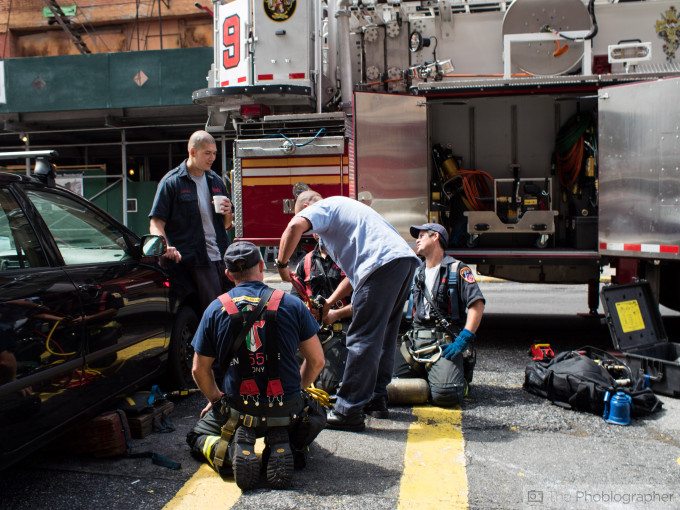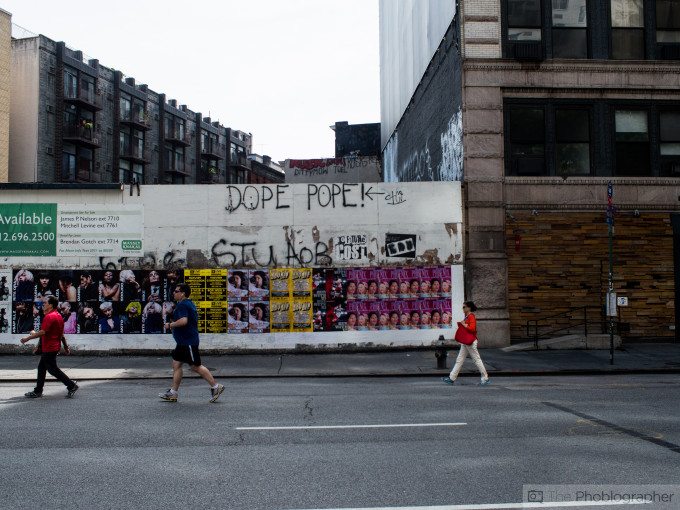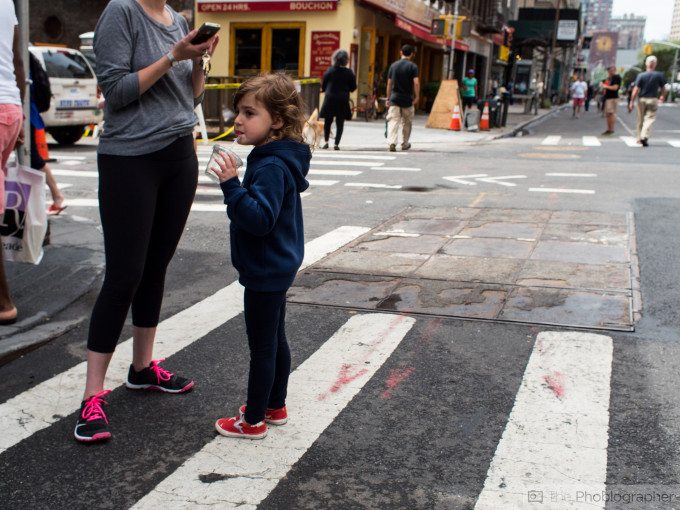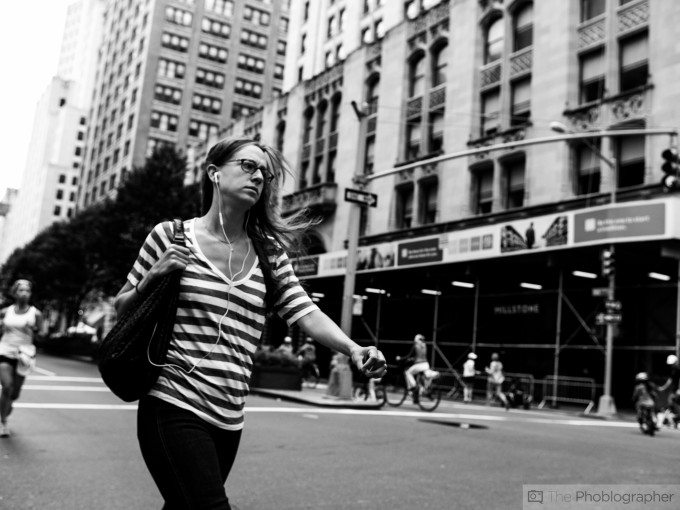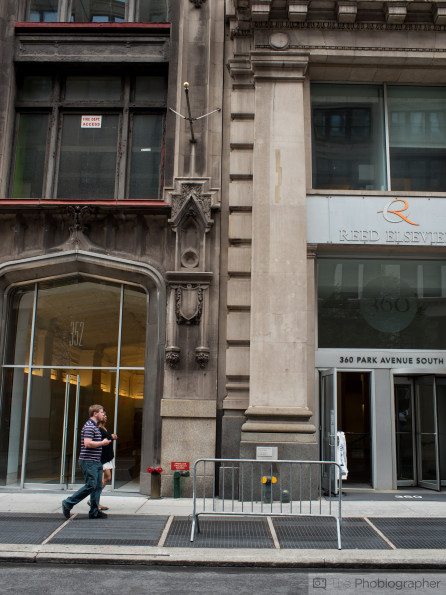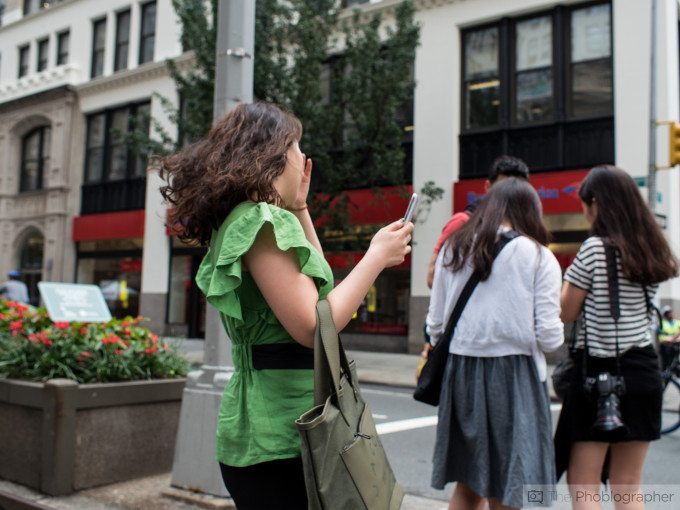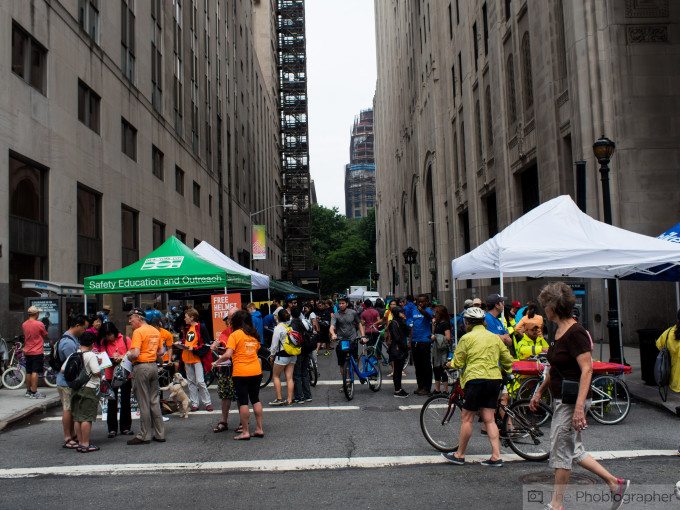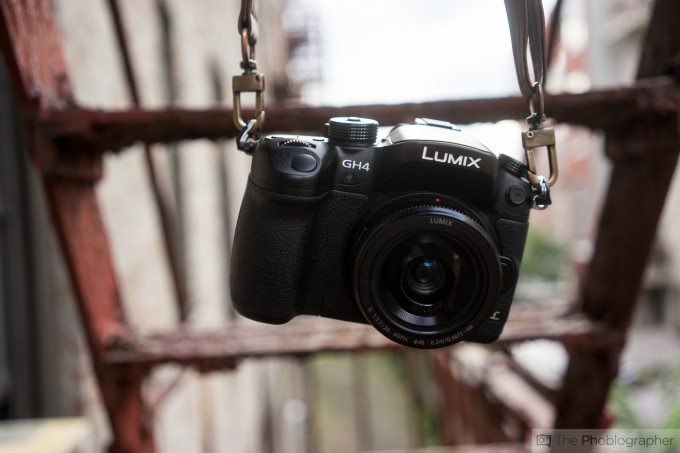The Panasonic GH4 is a camera that, when announced, was for the most part an incremental upgrade from the GH3–on paper at least. However, the GH3 was also quite a good camera. But if you loved the GH3, then you’ll be amazed by what the GH4 can do. It focuses faster, has better image quality and feels great in the hand. However, this is all really to a certain point.
At its heart, the GH4 houses a 16.05MP Four Thirds sensor, has magnesium alloy construction, 49 autofocus points, 4K video recording, a 3 inch 1,035K dot LCD screen, and a 2,359K-Dot OLED Live View Finder. But is that enough to make you leave your current camera?
Pros and Cons
Pros
– Excellent build quality
– Fast AF performance
– Focus peaking works like a charm
– Feels great in the hands
– EVF is very nice
Cons
– Button placement takes a bit of time to get used to
– Beautiful image quality up to ISO 6400
Gear Used
We tested the Panasonic GH4 with the Voigtlander 17.5mm f0.95, 20mm f1.7 II, and the 42.5mm f1.2 lens. At times, we also shot it while using Pocket Wizard Plus III Transceivers and the Adorama Flashpoint Streaklight 180 WS.
Tech Specs
Specs taken from the B&H Photo listing of the product
- 16.05 MP Digital Live MOS Sensor
- DCI 4K 4096×2160 at 24p
- UHD 4K 3840×2160 at 30p/24p
- Full HD up to 60p
- 3.0″ 1,036k-Dot OLED Touchscreen Monitor
- 2,359K-Dot OLED Live View Finder
- Support for 59.94p, 23.98p, 50p, & 24p
- 4:2:2 8-Bit or 10-Bit HDMI Output
- High-Speed 49-Point Autofocus
- Magnesium Alloy, Weather-Sealed Body
Ergonomics
The Panasonic GH4 is a camera that looks very entry level in some ways, but completely isn’t. Indeed, you can’t let is small size deceive you. Starting with the front of the camera, it is nearly devoid of buttons with the exception of a lens release, shutter release, and the Lumix label.
Moving to the top of the camera, you’ll notice more controls like a drive mode wheel, hot shoe, mode dial with a locking button in the middle, ISO control, exposure compensation, white balance, on/off switch, and the pop-up flash. Additionally, note that the LCD screen can articulate.
Of course, there is an exposure dial here as well.
The back of the camera, you can see even more controls. There are two dials here (one for control while the other can do a multitude of tasks.) Additionally, you can find display buttons, menu buttons, playback, and the LCD screen among the back layout.
Around all of this, you can control much of the camera just by looking through the EVF.
Build Quality
The Panasonic GH4 feels a bit beefier but also slimmer than the GH3. Overall though, it feels great in the hand and was super comfortable during our outings in NYC for street photography. Indeed, we have to liken it to a Canon 5D Mk III being made in aRebel’s size.
Though the camera is billed as being splashproof, Panasonic did not give us the go ahead to run it under a faucet in our standard test. For most folks going for this camera, you may still want to add another layer of protection when shooting in tough weather conditions. But otherwise you shouldn’t have any issues with its functionality.
Ease of Use
The Panasonic GH4 has very, very simplistic menus–and once you get used to them and navigate in conjunction with the touch screen it’ll be a piece of cake. Where the camera becomes a bit hairy to use though is with the button layout. There are many, many buttons; and unless you have some very flexible muscle memory then it may be a bit difficult for you to get used to the layout.
In real life use though, the buttons are placed in such a way that they’re very easy to use. However, my mind kept trying to turn the back dial (the flat one similar to Canon’s) to control the ISO instead of pressing the dedicated ISO button then switching it. This would have been a nice addition to the camera’s two Nikon-style exposure dials.
Beyond all this, WiFi integration and setup is also pretty straightforward and fun to use.
Autofocus
The GH4 seems to perform best with Panasonic lenses–we put Sigma and Olympus lenses on it to test the performance and neither could keep up with Panasonic’s 20mm f1.7 II or their 42.5mm f1.2 lenses. What we really liked about the GH4 is the simple selection of focusing areas or zones via the back buttons–just like Olympus, Canon and Nikon do but that Sony has failed to implement in many of their mirrorless camera options. And for that, the autofocus system on the Panasonic GH4 is meant much more for actually making gainful employment from the camera.
Where we found the camera’s autofocus to really shine is with the 20mm lens. The two worked in conjunction like a well trained orchestra.
Metering
During our Sunny 16 tests, we found the Panasonic GH4 to underexpose by around 1/3rd of a stop. This is standard in the digital world and in all honesty isn’t a major deal breaker. However, keep that in mind when you want to shoot something quickly while in manual mode.
Image Quality
EXIF DATA IS INTACT WITH ALL IMAGES. TO SEE EXPOSURE INFO, SIMPLY CLICK THE IMAGE AND IT WILL BE IN THE URL. FURTHER, WE REVIEWED THIS CAMERA FROM THE POINT OF VIEW OF A PHOTOGRAPHER.
When it comes to image quality, the Panasonic GH4 is a Micro Four Thirds camera. In our tests, we found the GX7’s image quality to be more on par with what we want in terms of color depth and rendering, but the GH4 is still no slouch.
RAW File Versatility
As far as the RAW file versatility of the Panasonic GH4 goes, you can very much liken it to what film can do. The GH4 naturally doesn’t boost saturation, vibrance or contrast (no matter what the picture profile is) and so the images that you get have a better dynamic range right out of the camera.
The way that translates into a better RAW file versatility is that you can then pull more data from both the shadows and the highlights. To that end, the GH4’s raw files are ones that you’re bound to have a lot of fun with in Adobe Lightroom as long as you have the know-how to work with the RAW files. It also couldn’t hurt to have a working knowledge of color theory.
With that said, the files are also quite sensitive. A tiny push in one direction for saturation of purples/blues can make the color of the woman’s tank top on the left look very different. And with this in mind, you should exercise restraint and realize that editing an image may be a slow process to get it just right.
Because of this reason, amateur photographers with less knowledge of color theory or post-production may not be able to take the fullest advantage of the camera’s capabilities. For example, most folks don’t know how to render images to look like film without the use of presets–and quite obviously Panasonic’s file are more than capable of accomplishing this.
At this point in the technology world, Micro Four Thirds sensors are also more than good enough to produce images that can be published in magazines and on major websites.
High ISO Abilities
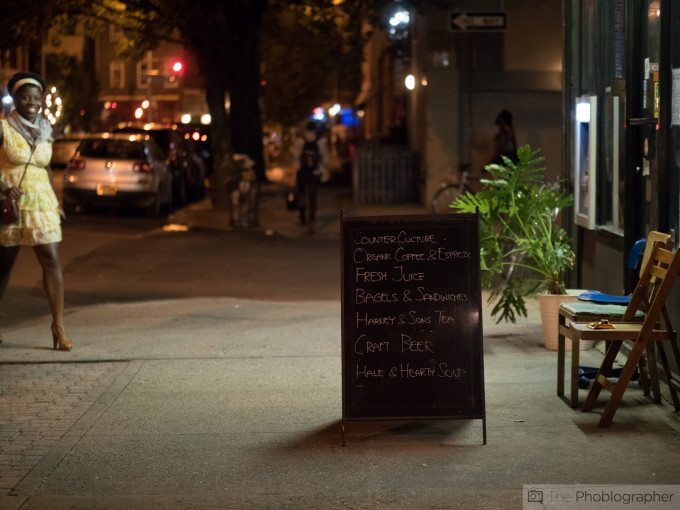
In our field tests, we found the GH4’s high ISO abilities to hold together pretty well until ISO 6400. After this, it became a bit of a hot mess that we’d rather not put up with, though it still wasn’t the worst that we’ve seen. All of the files that we shot can be easily massaged in Adobe Lightroom 5 to nerf the noise.
Here’s what that looks like.
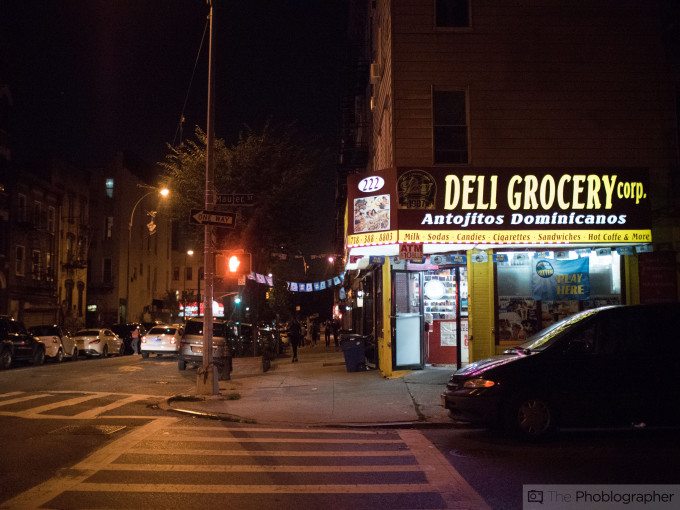
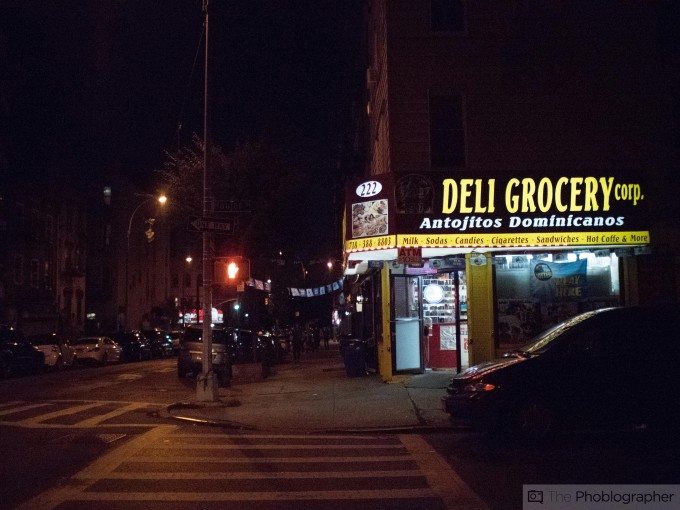
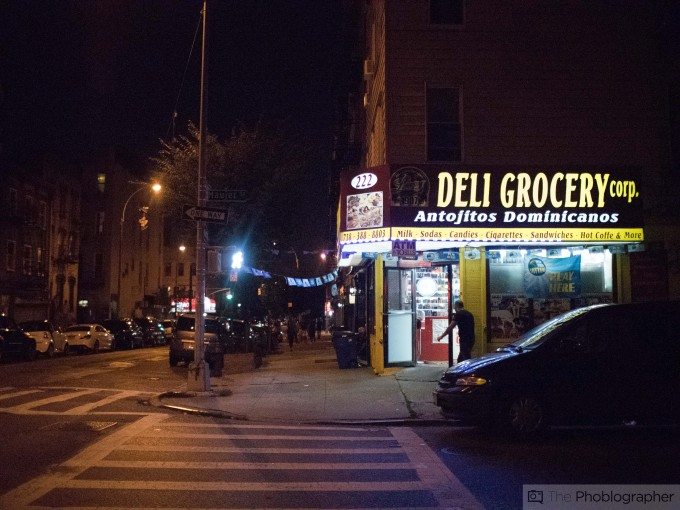
Extra Image Samples
Conclusions
Likes
– Great feel to the ergonomics
– Beautiful EVF
– Touch screen is great
– Fast to focus
– Not too large or heavy
Dislikes
– Wish there were full weather sealing
– Super expensive
Panasonic’s GH4 is a beast of a camera with a lot going for it. It has great autofocusing, 4K video, very versatile RAW files, pretty good high ISO abilities, great ergonomics, and WiFi built in. There is really no reason that one could feel like this camera is inadequate in any shape or form. However, if you’re a GH3 owner, we recommend keeping what you have–unless you want to shoot video of course.
We rate the Panasonic GH4 a five out of five star rating and also award the camera our coveted Editor’s Choice award. You can snag your own at B&H Photo, Adorama and Amazon for $1,697.99
Recommended Lenses and Accessories
– Panasonic 20mm f1.7 II– Panasonic’s cult pancake prime is a great lens for this camera’s autofocusing abilities.
– Voigtlander 17.5mm f0.95– Our favorite manual focus lens for the Micro Four Thirds system surely gets a mention here–especially for videographers.
– Panasonic 12-35mm f2.8– Panasonic’s workhorse of a zoom lens has weather sealing and fast focusing abilities to boot.


